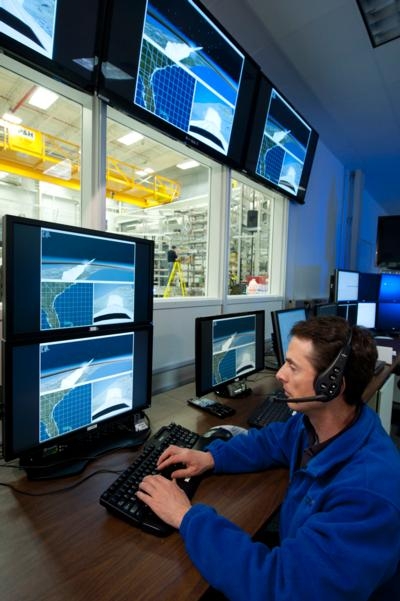Tue, Jan 14, 2014
'First Light' Milestone Reached At Marshall Space Flight Center
The modern avionics system that will guide NASA's Space Launch System (SLS), the most powerful rocket ever built, has seen the light. The flight software and avionics for SLS were integrated and powered for testing Thursday at NASA's Marshall Space Flight Center in Huntsville, AL, as part of a milestone known as first light.

The milestone enables early integration and testing of avionics and software to help NASA perfect the system and ensure the units communicate together as designed. Avionics tell the rocket where it should fly and how it should pivot its engines to stay on course. "We continue to make good progress developing SLS," said Dan Dumbacher, deputy associate administrator for exploration systems development at NASA Headquarters in Washington. "The avionics are like the central nervous system for the launch vehicle. They’re of critical importance and testing them early helps us build a more robust rocket."
The SLS avionics and the flight computer will be housed in the rocket's core stage. When completed, the core stage will be more than 200 feet tall and store cryogenic liquid hydrogen and liquid oxygen that will feed the rocket's RS-25 engines.
The first SLS flight test, targeted for 2017, will feature a configuration for a 77-ton lift capacity and carry an uncrewed Orion spacecraft beyond low-Earth orbit to test the performance of the integrated system. As the SLS evolves, it will provide an unprecedented lift capability of 130 metric tons (143 tons) to enable missions even farther into our solar system to places such as to an asteroid and Mars.
The Boeing Company, prime contractor for the SLS core stage and its avionics, delivered the flight computers and supporting avionics hardware. NASA's Integrated Avionics Test Facilities team provided and installed the structure and simulation capability to model the environments the vehicle will experience during launch. With the avionics hardware units arranged in flight configuration on the structure and with the flight software, the facility will replicate what will actually fly the rocket.
(Pictured: NASA test engineer James Peckham runs an avionics flight simulation to see how SLS will perform during launch)
More News
Airplane Bounced About 3 Ft Then Touched Back Down And Then, With No Brakes Applied, The Airplane Began Veering To The Left Analysis: The pilot entered the airport traffic pattern >[...]
Aero Linx: British Microlight Aircraft Association (BMAA) The primary focus within all aviation activity is SAFETY. In all aspects of our sport SAFETY must come first, whether it b>[...]
From SnF25 (YouTube Edition): William Wynne Builds Practical Aircraft Engines on the Corvair Platform Seeking an affordable alternative to the traditional aircraft engine options, >[...]
How To Get A Story On Aero-TV News/Feature Programming How do I submit a story idea or lead to Aero-TV? If you would like to submit a story idea or lead, please contact Jim Campbel>[...]
From 2023 (YouTube Edition): Bridge of CiES CiES Inc. is a Bend, Oregon-based designer and manufacturer of modular embedded aircraft systems and sensors. The company’s fuel-l>[...]
 NTSB Final Report: Aviat A1
NTSB Final Report: Aviat A1 ANN's Daily Aero-Linx (07.08.25)
ANN's Daily Aero-Linx (07.08.25) Classic Aero-TV: Fly Corvairs Reliable Engine Alternative
Classic Aero-TV: Fly Corvairs Reliable Engine Alternative ANN FAQ: Contributing To Aero-TV
ANN FAQ: Contributing To Aero-TV Classic Aero-TV: CiES Fuel-Quantity and e-Throttle Systems Praised
Classic Aero-TV: CiES Fuel-Quantity and e-Throttle Systems Praised



